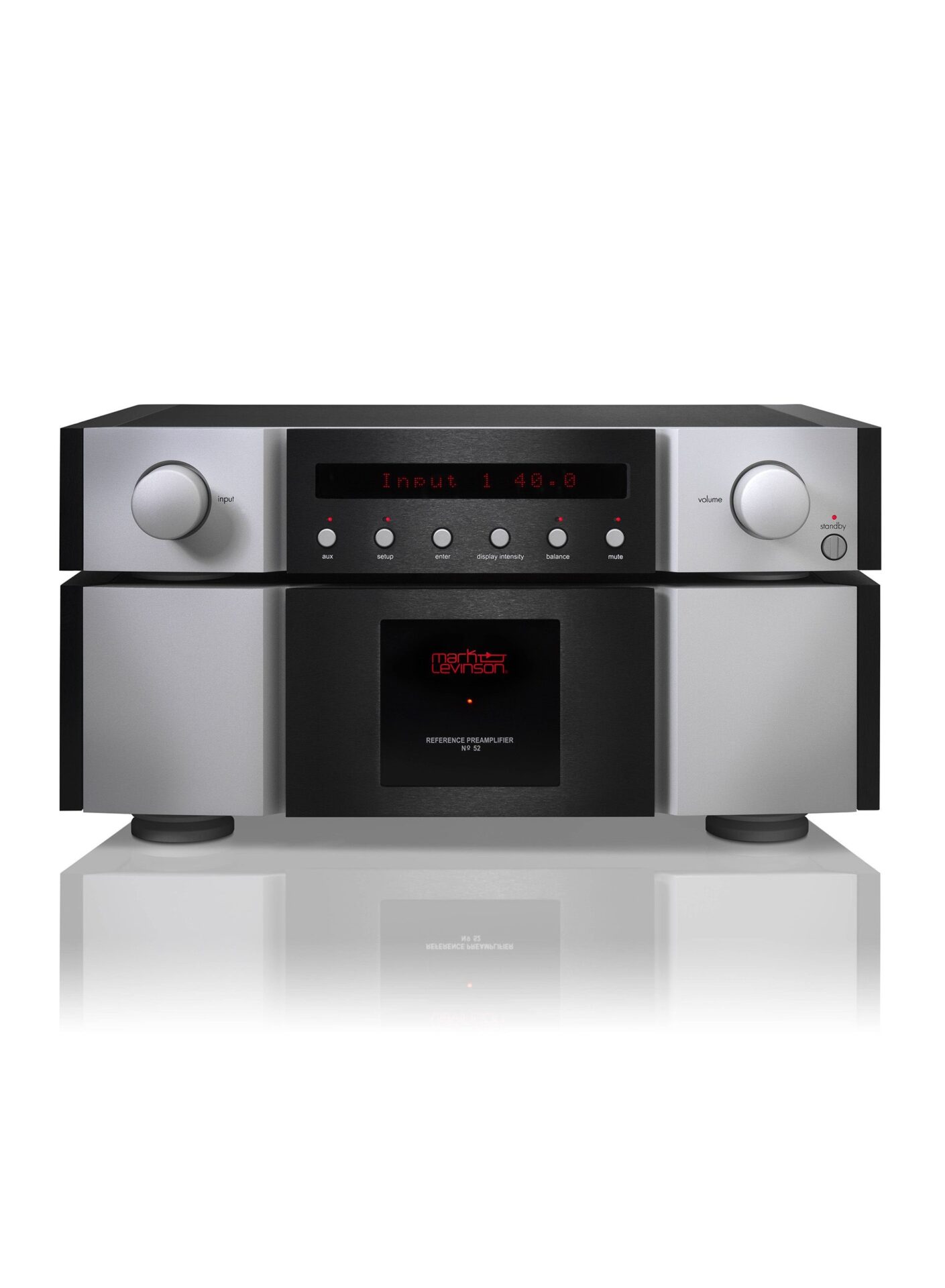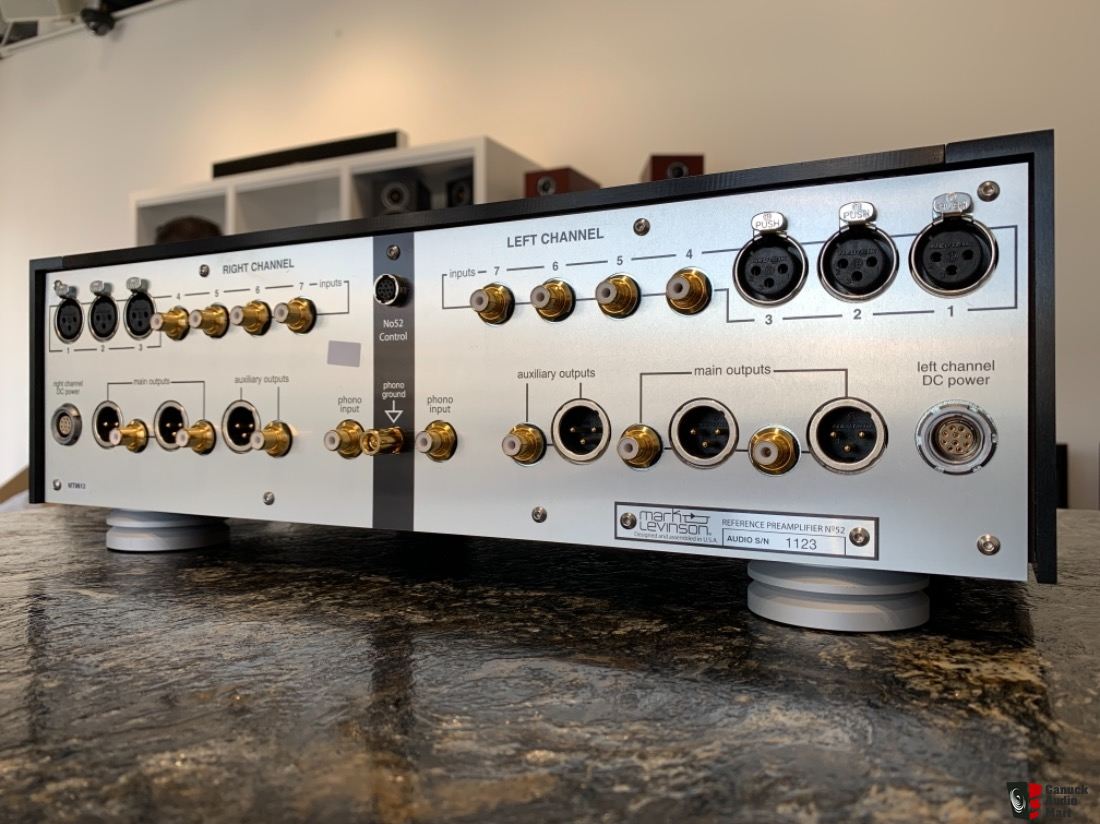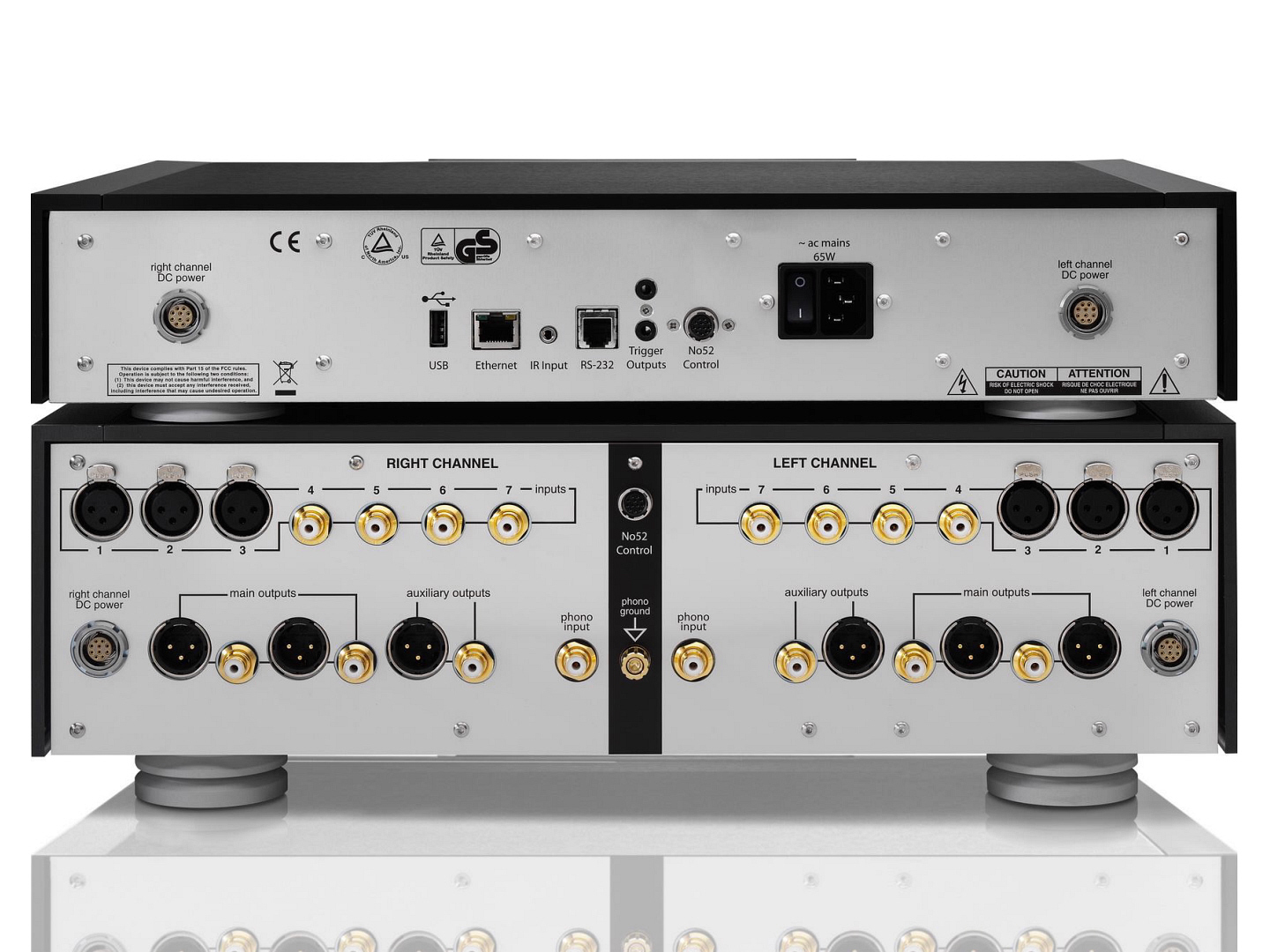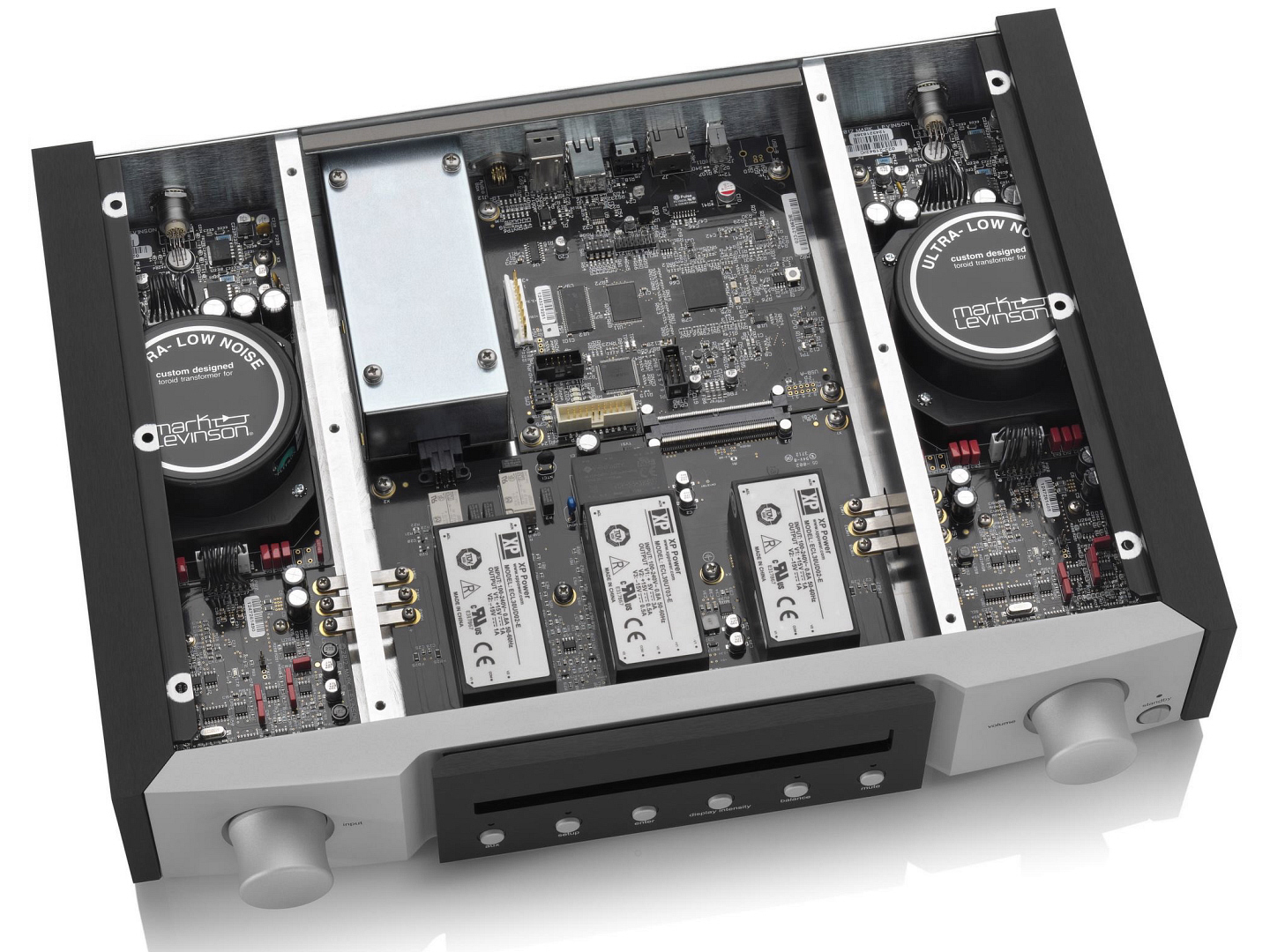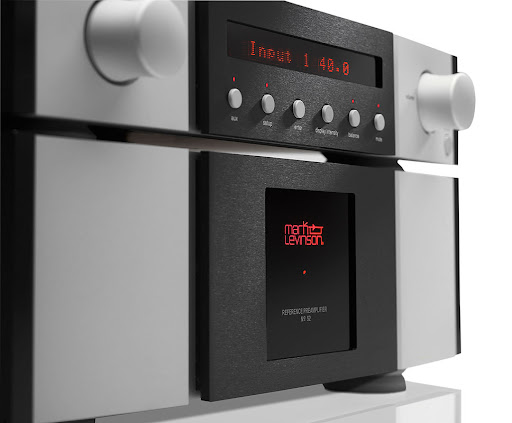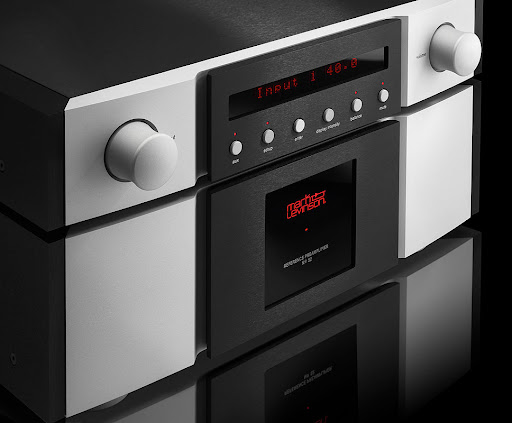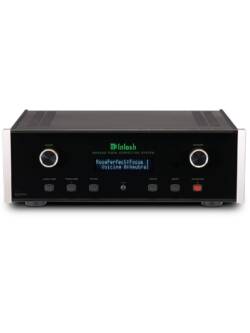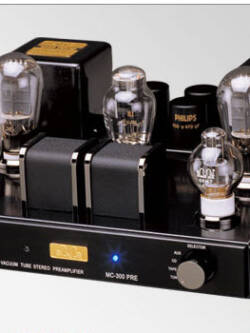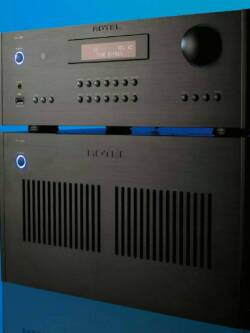Mark Levinson No. 52 Reference Preamplifier
Original price was: R480,000.00.R250,000.00Current price is: R250,000.00.
Mark Levinson No 52 preamplifier
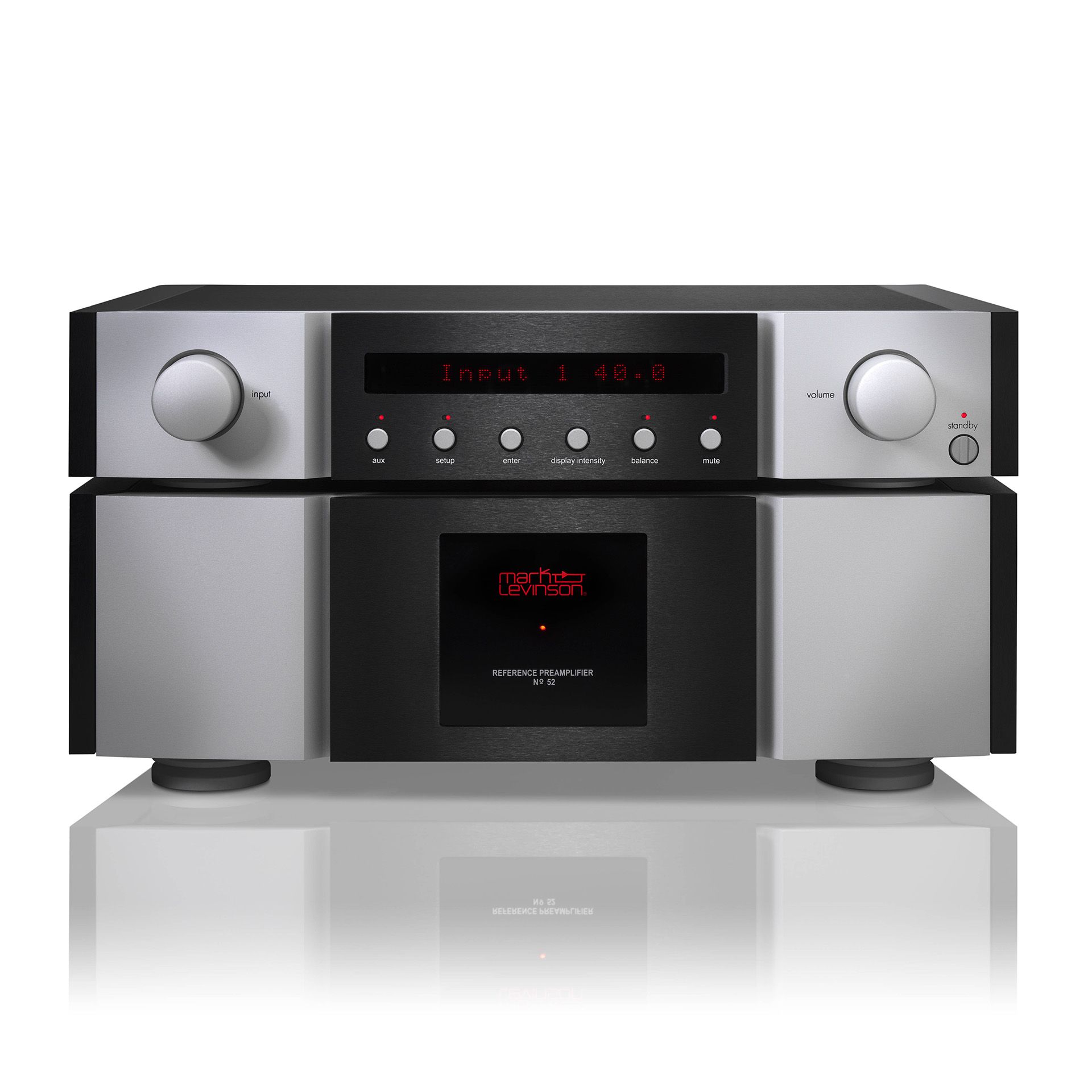
The No 52 is quite simply the finest Mark Levinson preamplifier ever. It is an all-analog, true dual-monaural design with a two-chassis configuration that separates the critical analog audio circuitry from the control section to maintain the purest signal paths possible.
The No 52 provides a comprehensive complement of inputs including three balanced XLR and four unbalanced RCA line-level inputs, and a dedicated phono input that is selectable for moving coil (MC) or moving magnet (MM) operation. Two sets of XLR and RCA stereo preamplifier outputs are provided, along with an auxiliary pair of XLR and RCA outputs that can be configured for fixed or variable level output with independent source selection. This enables the auxiliary outputs to function either as a third preamp out, a pass-through full-range subwoofer output or a record output.
The No 52 offers a unity gain SSP (surround sound processor) output that provides the ability to integrate the audio sources that are connected to it into a home theater system, while maintaining optimal and independent stereo operation for music sources. The No 52 provides extensive control and system interface connectivity via Ethernet, Mark Levinson’s proprietary ML Net, 12V trigger and IR control ports. In addition, a USB 2.0 (A) port facilitates possible future software upgrades. The No 52 is supplied with a remote control that can also be used to operate other Mark Levinson components.
The Mark Levinson No 52 is built to an extraordinary level of refinement. Its control section features mirror-imaged DC power supplies and AC regeneration circuits for remarkably clean and stable power delivery and signal purity. Individual left and right DC umbilical cords are used to connect to the audio sections in the second chassis, and control signals are delivered via a third cable to keep them isolated. The audio chassis is laid out in a mirror image, left/right configuration with isolated and independent circuit boards for the volume, main and auxiliary signal paths, and extensive shielding for critical components. The chassis is constructed from heavy aluminum extrusions and plates.
Like all Mark Levinson 40th Anniversary components, the No 52 is striking and elegant in appearance, with a rich, brushed metal black and silver faceplate accented by red illumination against a glass center panel.
Mark Levinson No52 (£28,000)
Mark Levinson’s development engineers have certainly designed a most glamorous preamplifier
The No52 is a two-chassis component designed with meticulous attention to detail both in its topology and in features that offer comprehensive system configurability. The rationale of this approach is to isolate the pure analogue audio circuitry from any possible source of pollution: it physically separates the power supply and microprocessor-driven controls from the audio electronics contained in the larger chassis.
Volume control is via a precision ladder resistor network with fine gain adjustment in 0.1dB steps. This sits in the No52’s audio stage chassis and is shielded in a central chamber, while the rotary encoder that governs it is in the control box.
The controller chassis contains four universal-input power supplies, one for low-current standby, one each for the two audio channels, and an independent supply driving the front panel, power management, RS232 and Ethernet ports. A custom-built toroidal transformer and regeneration circuitry provide ‘clean’ DC to control relays and audio circuits.
The user interface is simply wonderful – enhanced by a new hardware platform developed specifically to add Ethernet capabilities, firmware access, and configuration backup on a USB thumb drive.
The setup menu for the RIAA stage features multiple loading and gain options to confer compatibility with most high and low-output cartridges. It also provides a switchable 20Hz high-pass filter and allows correction for a cartridge’s channel imbalance in very fine (0.1dB) increments.
Being a fully balanced design – including its phono gain stage – single-ended inputs are converted to balanced signals and processed as such throughout. There are three independent outputs available: two Main and one Auxiliary, each available on balanced (XLR) and single-ended (RCA) connectors.
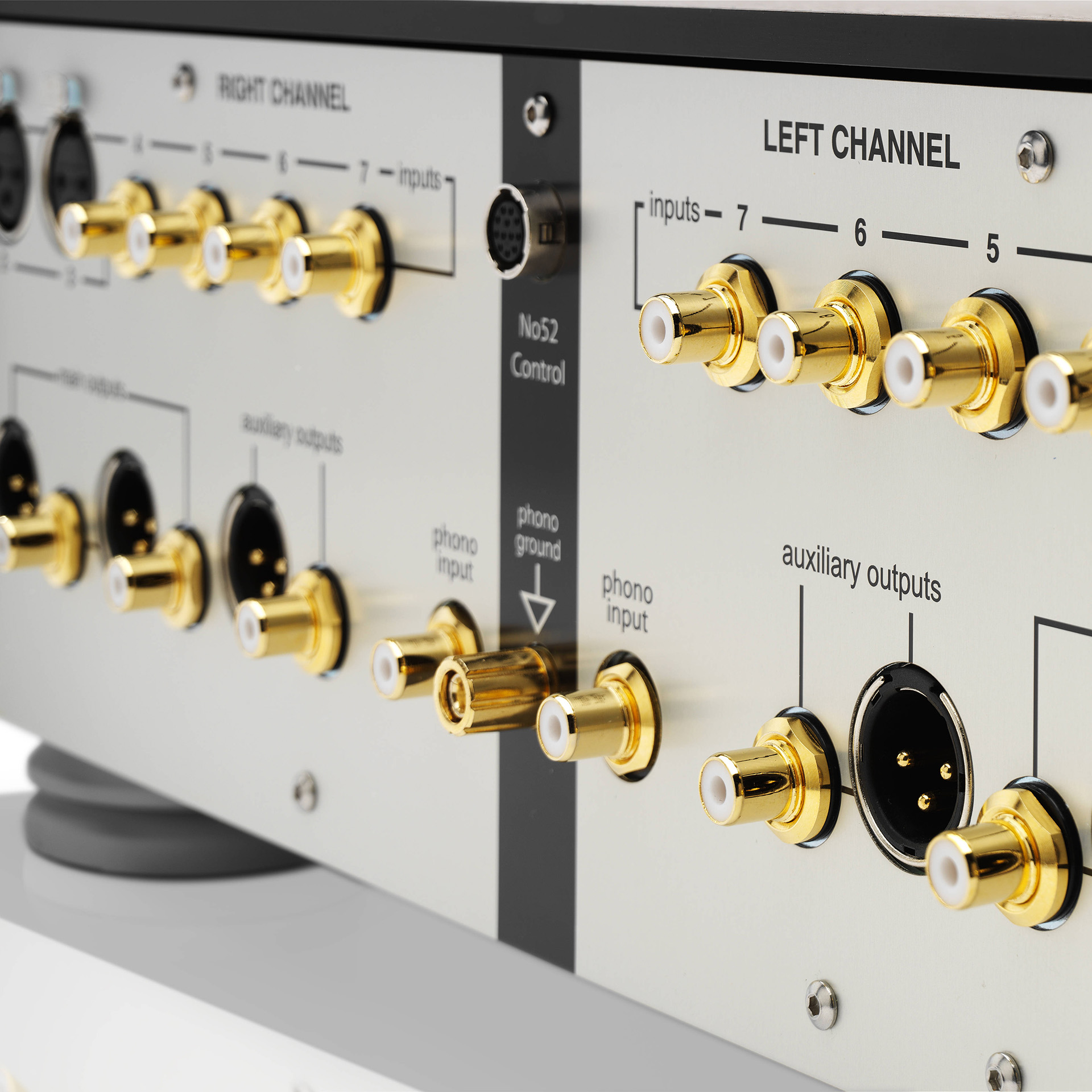
Bewitching
How to describe the sonic character of a preamplifier designed to sound of nothing at all? What we can say is that the No52 transformed the overall performance of our system whatever amplifier we partnered it with, its transparency allowing forensic inspection of fine detail buried in recordings.
And with appropriate audiophile-quality recordings it helped serve up an expansive and enveloping soundstage that drew us in to a musical performance in a manner that was dangerously addictive.
Playing host to the No52 was of course a perfect reason to enjoy hearing those top-of-the-line Mark Levinson No53 Reference monoblocks again. But we don’t remember them being quite as bewitching as we experienced on this occasion. The sound was more ‘beautiful’, brimming with deeply saturated and vibrant tone colours, and always inviting.
We revisited the 96kHz/24-bit recording of the jazz/rock combo Vantage Point on Resolution [AIX]. The No52 opened the musical window so that the texture and resonance of each instrument was portrayed with fabulous accuracy.
All the while the sound was luscious and relaxed, smooth and sweet but without being too creamy or mellow. It was also vivid and ultra-detailed without appearing antiseptically clean, and with instruments’ transients sharply spotlighted, it was light of foot while still meaty and powerful.
Verdict
Mark Levinson’s development engineers have certainly designed a most glamorous preamp. Not only does it get out of the way of the music, its flexible configurability and pleasing user interface make it a delight to operate. Fabulous.
Description
General Specifications
| Description | Reference Dual-Monaural Preamplifier |
|---|---|
| Frequency Response | 10Hz – 40kHz (±0.2dB) |
| Frequency Response (Phono) | ±1dB (RIAA response) |
| Input Impedance | Input Impedance (line-level) 100k ohms — Input Impedance (phono) Resistive 3.3Ω, 5.0Ω, 7.7Ω, 10Ω, 33Ω, 50Ω, 77Ω, 100Ω, 330Ω, 47kΩ, (user-selectable) Capacitive 50pF, 100pF, 150pF, 200pF, 250pF, 300pF, 350pF, 0.01μF (user-selectable) |
| Height | 8.75″ (22.2 cm) – Control = 3.25″ (8.2 cm); Audio = 5.5″ (14 cm) |
| Width | 17.25″ (43.8 cm) |
| Depth | 13″ (33 cm) |
| Weight | 60 lb (27 kg) Control = 25 lb (11 kg); Audio = 35 lb (16 kg) |
| Phono Inputs | Input Overload (phono) >100mV @1kHz (40dB gain); >10mV @1kHz (60dB gain) |
| Communication and Control | Volume Control Range 80.0dB |
| Analog Audio Inputs | 3 balanced (female XLR) stereo inputs; 4 single-ended (Mark Levinson-RCA) stereo inputs |
| Analog Audio Outputs | 1 balanced (male XLR) stereo main output; 1 single-ended (Mark Levinson-RCA) stereo main output; 2 single-ended (Mark Levinson-RCA) stereo record outputs |
| Maximum Output Level | 16V – balanced (XLR) connectors; 8V – unbalanced (RCA) connectors |
| Signal-to-Noise Ratio | Residual Noise < 120dB (20Hz – 20kHz, input terminated,balanced) |
| Gain | Gain (line-level stage) 0dB, +6dB, +12dB, or +18dB (user-selectable) — Gain (phono stage) +40dB, +60dB @1kHz (user-selectable) — Gain Resolution 1.0dB increments up to 23.0dB on display (–57dB to –80dB); 0.1dB increments above 23.0dB on display (0dB to –57dB) |
| Output Impedance | 20 ohms – balanced (XLR) connectors; 10 ohms – unbalanced (RCA) connectors |
| Power Requirements | Operating Voltage 100V – 240VAC, 50Hz/60Hz |
Audio Specifications
| Description | Reference Dual-Monaural Preamplifier |
|---|---|
| Frequency Response | 10Hz – 40kHz (±0.2dB) |
| Frequency Response (Phono) | ±1dB (RIAA response) |
| Input Impedance | Input Impedance (line-level) 100k ohms — Input Impedance (phono) Resistive 3.3Ω, 5.0Ω, 7.7Ω, 10Ω, 33Ω, 50Ω, 77Ω, 100Ω, 330Ω, 47kΩ, (user-selectable) Capacitive 50pF, 100pF, 150pF, 200pF, 250pF, 300pF, 350pF, 0.01μF (user-selectable) |
| Height | 8.75″ (22.2 cm) – Control = 3.25″ (8.2 cm); Audio = 5.5″ (14 cm) |
| Width | 17.25″ (43.8 cm) |
| Depth | 13″ (33 cm) |
| Weight | 60 lb (27 kg) Control = 25 lb (11 kg); Audio = 35 lb (16 kg) |
| Phono Inputs | Input Overload (phono) >100mV @1kHz (40dB gain); >10mV @1kHz (60dB gain) |
| Communication and Control | Volume Control Range 80.0dB |
| Analog Audio Inputs | 3 balanced (female XLR) stereo inputs; 4 single-ended (Mark Levinson-RCA) stereo inputs |
| Analog Audio Outputs | 1 balanced (male XLR) stereo main output; 1 single-ended (Mark Levinson-RCA) stereo main output; 2 single-ended (Mark Levinson-RCA) stereo record outputs |
| Maximum Output Level | 16V – balanced (XLR) connectors; 8V – unbalanced (RCA) connectors |
| Signal-to-Noise Ratio | Residual Noise < 120dB (20Hz – 20kHz, input terminated,balanced) |
| Gain | Gain (line-level stage) 0dB, +6dB, +12dB, or +18dB (user-selectable) — Gain (phono stage) +40dB, +60dB @1kHz (user-selectable) — Gain Resolution 1.0dB increments up to 23.0dB on display (–57dB to –80dB); 0.1dB increments above 23.0dB on display (0dB to –57dB) |
| Output Impedance | 20 ohms – balanced (XLR) connectors; 10 ohms – unbalanced (RCA) connectors |
| Power Requirements | Operating Voltage 100V – 240VAC, 50Hz/60Hz |
